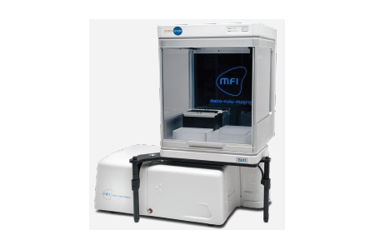Evaluating The Stability Of Therapeutic Biosimilar Monoclonal Antibodies With Micro-Flow Imaging

Reveal The World Of Subvisible Particles With Micro-Flow Imaging
Biosimilars are a class of molecules that are identical to innovator drugs by amino acid sequence, and represent an attractive opportunity, particularly when those innovator drugs go off patent. To ensure similar quality, efficacy, and safety, certain critical quality attributes (CQA) must be assessed. One of these CQAs is the presence of subvisible particles in biopharmaceutical products. Particulate contamination, including protein aggregates, can have an effect on drug safety and efficacy, and characterization of subvisible particles can be an indicator of product and formulation stability.1
Micro-Flow Imaging (MFI™) from ProteinSimple directly images subvisible particles, collecting in-depth morphological data for each individual particle. With its powerful Image Analysis software, MFI can distinguish between subvisible particle types, such as protein aggregates, oil droplets, and air bubbles, thereby providing insight into the pharmacopeial particle definitions to bring a product to market. It’s more sensitive than traditional methods like Light Obscuration (LO) and Manual Microscopy, and the Bot1 autosampler automates the analysis of up to 90 samples in a batch, saving on time and costs.
In this App Note, we show how we use MFI to evaluate the stability of two therapeutic monoclonal antibodies, trastuzumab and bevacizumab, and their biosimilars.
Get unlimited access to:
Enter your credentials below to log in. Not yet a member of Cell & Gene? Subscribe today.
